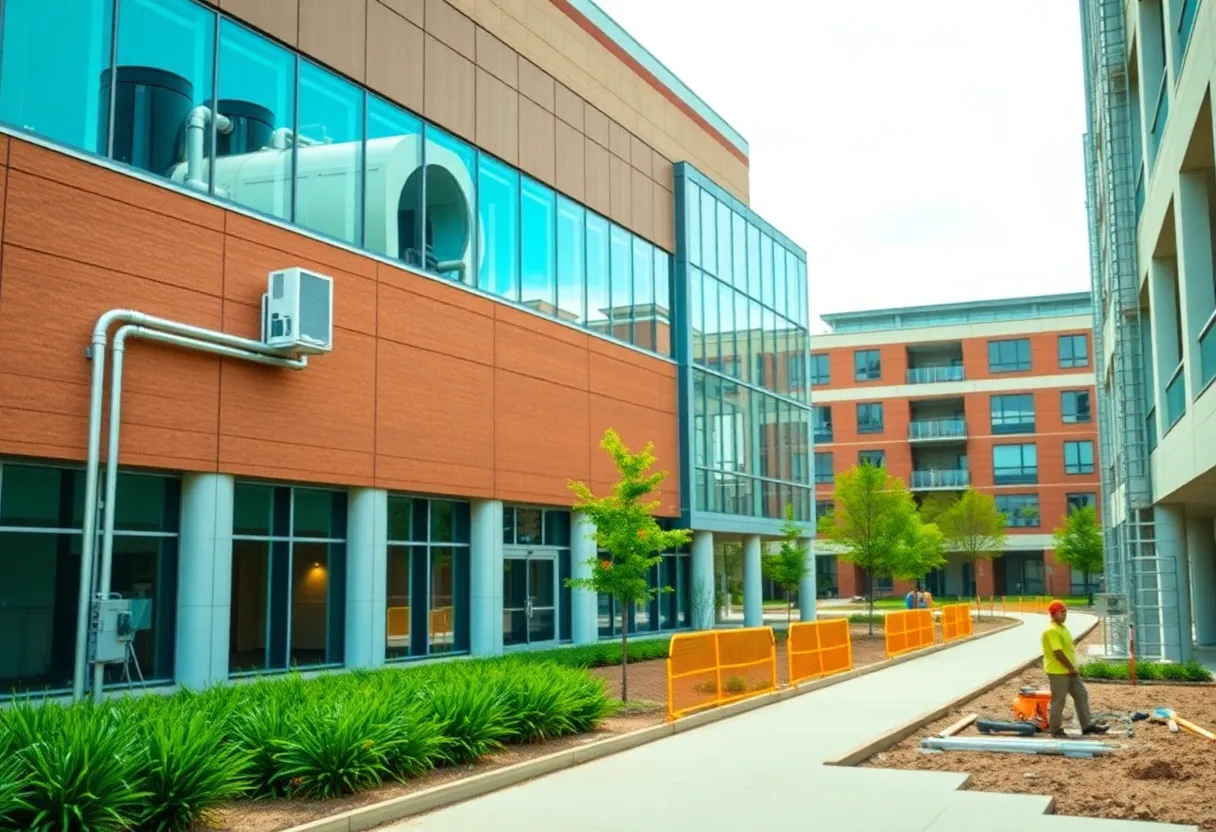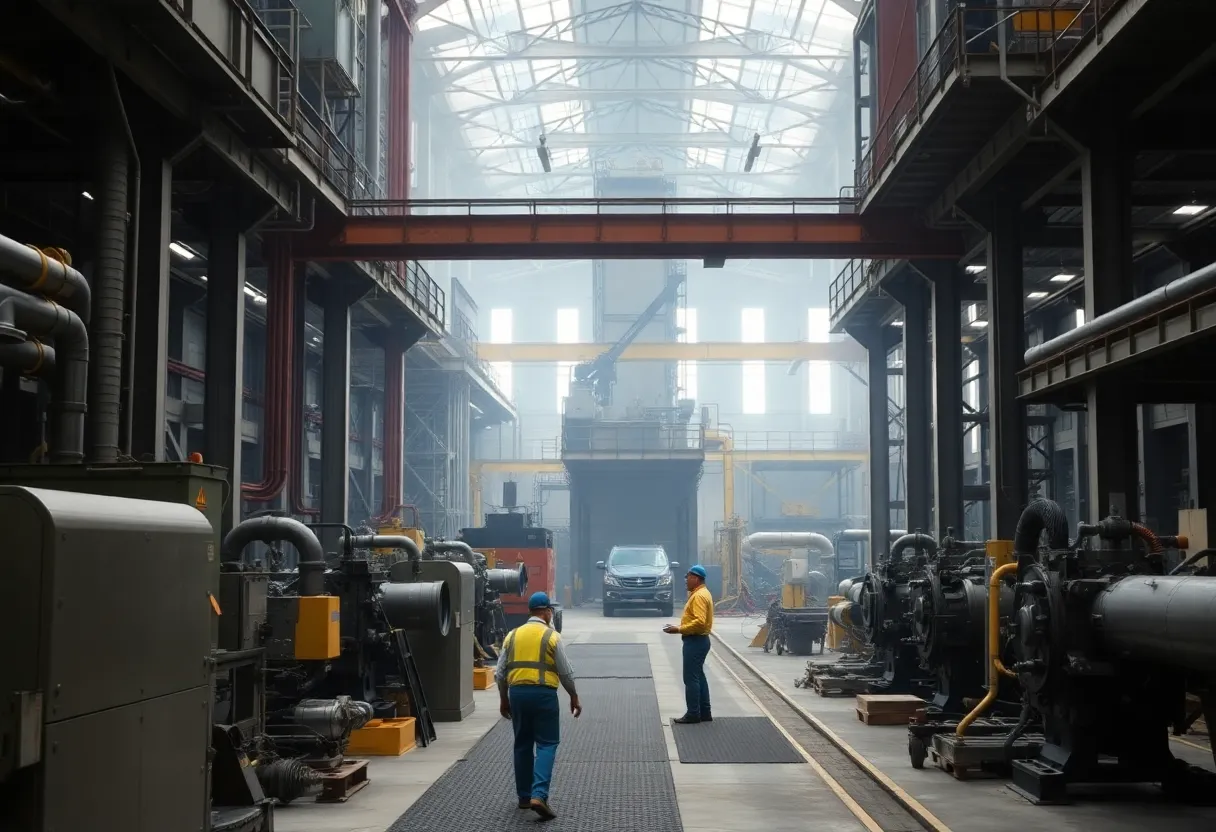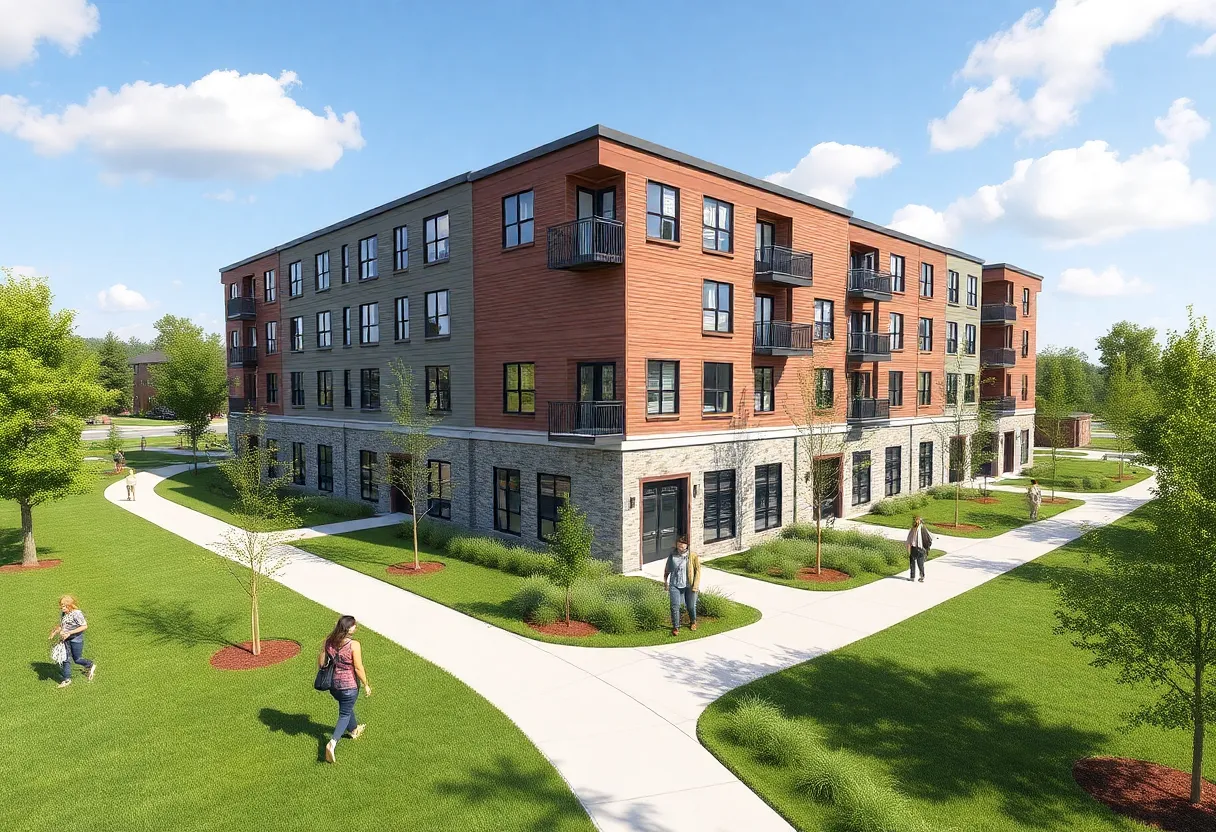Global, September 11, 2025
News Summary
A major industry report projects the global civil engineering market will expand substantially, rising from USD 13.8 trillion to USD 23.0 trillion driven by a 5.2% CAGR. The planning & design and building segments are expected to lead revenues, supported by urban growth, infrastructure investment, smart city programs and renewable energy projects. Key drivers include adoption of BIM, modular construction and sustainable materials, while challenges include material price volatility, supply chain limits and labor shortages. Regional patterns show rapid expansion in Asia-Pacific and steadier modernization in North America and Europe, creating opportunities for technology-enabled, integrated service providers.
Global Civil Engineering Market Set for Continued Growth Through 2035
The civil engineering market is projected to rise from USD 13.8 trillion in 2025 to a target of USD 23.0 trillion by 2035, expanding at a compound annual growth rate (CAGR) of 5.2% from 2025 to 2035. Planning & design and building segments are expected to lead the market, backed by broad infrastructure development, rising urbanization, and sustained public investment in roads, bridges, and public works. These figures reflect a long-range outlook that traces the market’s evolution across distinct growth phases from 2021 through 2035.
Market trajectory at a glance
The market’s early 2020s phase shows a steady expansion, moving from roughly USD 10.7 trillion in 2021 to USD 13.8 trillion in 2025. Annual increments during that period are outlined as about USD 0.6 trillion in three consecutive years, followed by a slightly larger step of USD 0.7 trillion in the final year. The 2021–2025 window is described as a period of sustained acceleration fueled by infrastructure programs, urban growth, and greater government spending on transportation and public facilities.
From 2026 to 2030, the market is projected to progress with strengthened growth. Values are noted as 2026 USD 13.8 trillion, 2027 USD 14.6 trillion, 2028 USD 15.3 trillion, 2029 USD 16.1 trillion, 2030 USD 16.9 trillion, reflecting ongoing investments in high-speed rail, smart city initiatives, and expanded industrial facilities.
The 2031–2035 period is described as continuing expansion, with a rise from USD 17.8 trillion to USD 23.0 trillion and intermediate values listed as USD 18.8 trillion, USD 19.7 trillion, USD 20.8 trillion, and USD 21.8 trillion before reaching the forecasted peak. This phase is characterized by a mild deceleration in annual increments as some regions reach saturation in baseline infrastructure while overall demand remains robust.
Market segmentation and leading service lines
Market segmentation by service covers planning & design, construction management, maintenance, and other services (such as consultancy and inspection). The planning & design segment is projected to hold a dominant share, accounting for roughly 39.6% of civil engineering market revenue in 2025, while the building segment is anticipated to command about 45.1% of market revenue in 2025. Planning & design is described as the largest service category in 2025 due to its essential role in efficiency, safety, and cost control, with digital tools driving enhanced design accuracy and reduced rework.
Applications and regional views
In terms of application, the building segment leads, reflecting ongoing residential, commercial, and institutional construction and urbanization trends. Other applications include infrastructure, water resources, energy, and environmental engineering. Regional coverage extends across North America, Latin America, Western and Eastern Europe, the Balkan & Baltic region, Russia & Belarus, Central Asia, East Asia, South Asia & the Pacific, and the Middle East & Africa. Asia-Pacific leads new construction activity, while North America and Europe focus more on modernization and retrofitting of existing assets.
Growth drivers, challenges, and opportunities
Key growth drivers include large-scale infrastructure programs, rapid urbanization, smart city projects, and amplified public–private partnerships. Investments in transportation networks, urban development, and industrial facilities continue to fuel demand, while digital transformation—especially Building Information Modeling (BIM), modular construction, and sustainable materials—reshapes project execution and efficiency. Growing environmental concerns drive the integration of green design principles and climate-resilient structures. Opportunities are broad, encompassing smart city initiatives, industrial infrastructure, advanced construction materials, industrial automation, and renewable energy projects.
Market challenges and technical hurdles include raw material price volatility, supply chain constraints, labor shortages, and varying regulatory compliance across regions. On the technical side, geotechnical risks, structural integrity assessment, and efficient resource allocation remain focal concerns for project risk management. The outlook remains positive as governments pursue infrastructure modernization, urban expansion, and public utilities, complemented by partnerships with the private sector and the adoption of new construction technologies.
Country and competitive landscape
Country-level growth highlights include China at a CAGR of 7.0%, India at 6.5%, France at 5.5%, the UK at 4.9%, and the USA at 4.4% from 2025 to 2035. China’s drivers include large-scale infrastructure, urbanization, and government-led transportation, smart city, and industrial initiatives. India emphasizes modernization of infrastructure, smart city projects, and renewable energy corridors, with public–private partnerships accelerating large-scale projects. France focuses on urban infrastructure modernization, transportation, and energy sector developments, while the UK and USA anchor activity in residential/commercial construction, transportation projects, and industrial development respectively, with ongoing adoption of advanced construction techniques. Asia-Pacific generally leads new construction activity, with mature markets in North America and Europe prioritizing modernization and retrofitting.
Major players across the sector pursue integrated delivery models, digital project management, and cross-border partnerships. Companies active in civil and industrial projects pursue turnkey solutions, lifetime program management, and the use of technology-enabled services to meet demand. Regional dynamics and country-specific growth plans are expected to sustain opportunities across service categories and end-use applications for years to come.
Notable market features and context
The civil engineering market continues to be influenced by large-scale infrastructure investment, urban expansion, and public utility upgrades. Technological adoption—particularly BIM, modular construction, and sustainable materials—tends to improve efficiency and project coordination. The market also reflects ongoing interest in environmental sustainability, climate resilience, and the shift toward smart, energy-efficient structures as core design and construction principles.
Competitive and regional highlights (summary)
Market competition includes a range of multinational and regional players offering integrated, technology-enabled engineering services and turnkey solutions across transport, water, energy, and urban development sectors. The landscape emphasizes cross-border collaboration and the use of advanced project management tools to drive efficiency and reduce project timelines.
Key takeaways
Overall, the civil engineering market is advancing steadily, supported by infrastructure investments, urban growth, and a broad mix of application areas. With a 5.2% CAGR projected to 2035, the sector is positioned to benefit from continued demand for planning & design services, building projects, and modernization initiatives across regions and countries, alongside ongoing adoption of digital tools and green design practices.
Key players and project context (neutral overview)
Global activity includes major firms operating across continents, delivering infrastructure, building, and industrial projects with an emphasis on integrated delivery models and digital project management. Project portfolios range from transportation and urban development to water, energy, and environmental infrastructure, reflecting diverse opportunities in civil engineering worldwide.
Frequently Asked Questions
What is the expected size of the global civil engineering market by 2035?
The market is projected to reach about USD 23.0 trillion by 2035, with a CAGR around 5.2% from 2025 to 2035.
Which service segment leads the market in 2025?
Planning & design is the largest service category, anticipated to account for about 39.6% of market revenue in 2025, with the building segment following closely behind at around 45.1% revenue share.
Which region drives new construction activity?
Asia-Pacific leads in new construction, while North America and Europe emphasize modernization and retrofitting of existing infrastructure.
What are the major growth drivers?
Key drivers include large-scale infrastructure programs, urbanization, smart city projects, and public–private partnerships, along with adoption of digital tools and sustainable design practices.
What are the top growth countries and their rates?
China is projected to grow at about 7.0% CAGR, India at 6.5%, France at 5.5%, the UK at 4.9%, and the USA at 4.4% from 2025 to 2035.
What challenges does the market face?
Challenges include volatility in raw material prices, supply chain constraints, labor shortages, and regulatory compliance across regions, along with geotechnical and resource allocation considerations.
Key features at a glance
| Feature | Details |
|---|---|
| Original market size (2025) | USD 13.8 trillion |
| Projected market size (2035) | USD 23.0 trillion |
| CAGR (2025–2035) | 5.2% |
| Leading service segment (2025) | Planning & design (~39.6% of revenue) |
| Leading application segment (2025) | Building (~45.1% of revenue) |
| Top regional focus for new construction | Asia-Pacific |
| Countries with noted growth rates | China 7.0%, India 6.5%, France 5.5%, UK 4.9%, USA 4.4% |
| Key drivers | Infrastructure investment, urbanization, smart cities, PPPs, BIM, modular construction |
| Key challenges | Raw material price volatility, supply chain constraints, labor shortages, regulatory compliance |
Deeper Dive: News & Info About This Topic
Additional Resources
- Global Construction Review: China’s CCECC to invest $1.4bn in Africa’s Tazara line
- Wikipedia: Tanzania–Zambia Railway Authority
- Bloomberg: China to invest $1.4 billion to upgrade Africa’s Tazara railway line
- Google Search: Tazara railway upgrade
- Railway Gazette: Libyan railway construction could restart
- Google Scholar: Libyan railway construction
- African Review: CCECC reaches milestone on Nigeria roads project
- Encyclopedia Britannica: CCECC
- Interesting Engineering: 11 civil engineering projects that might define the future
- Google News: civil engineering projects future





